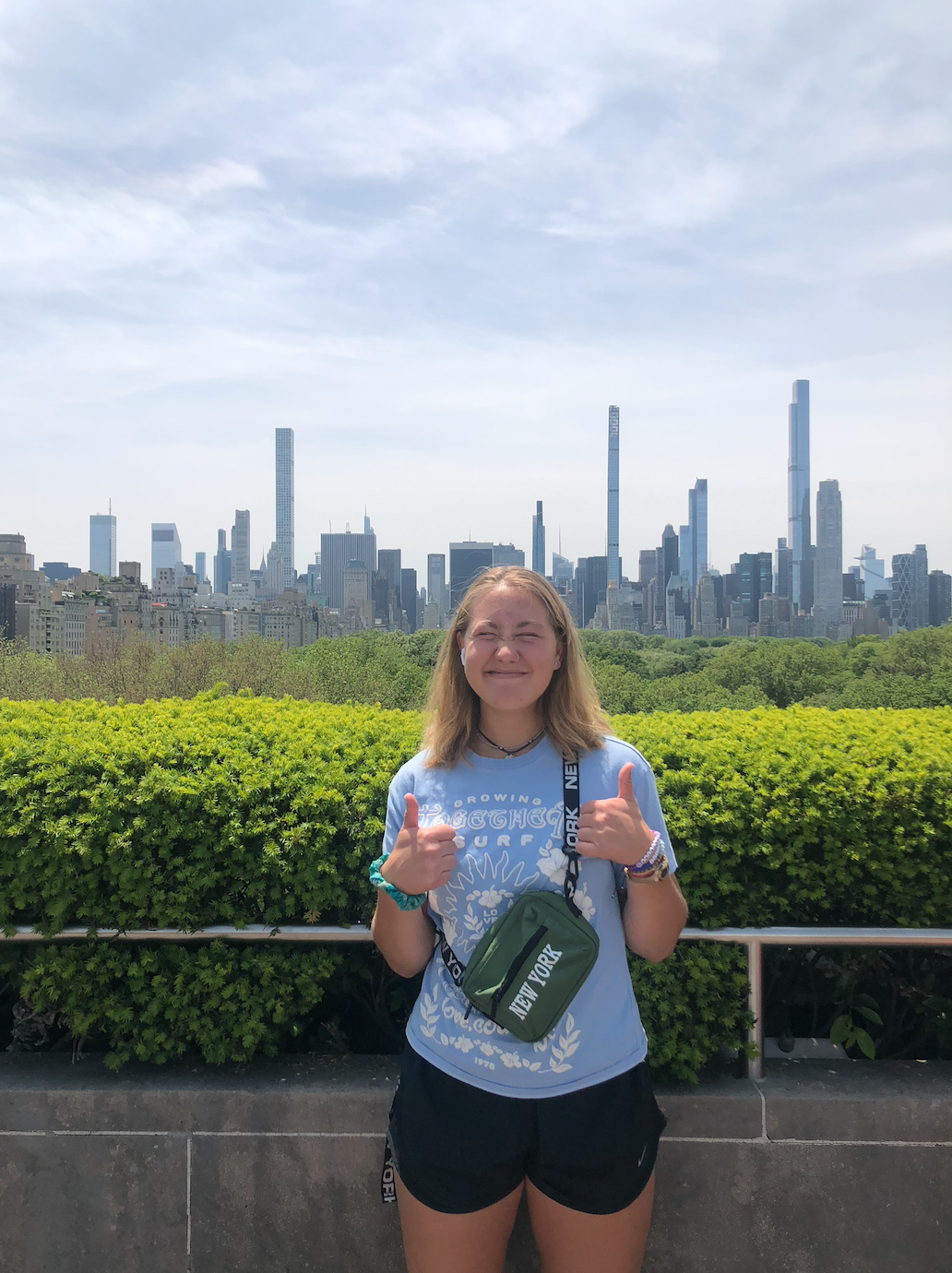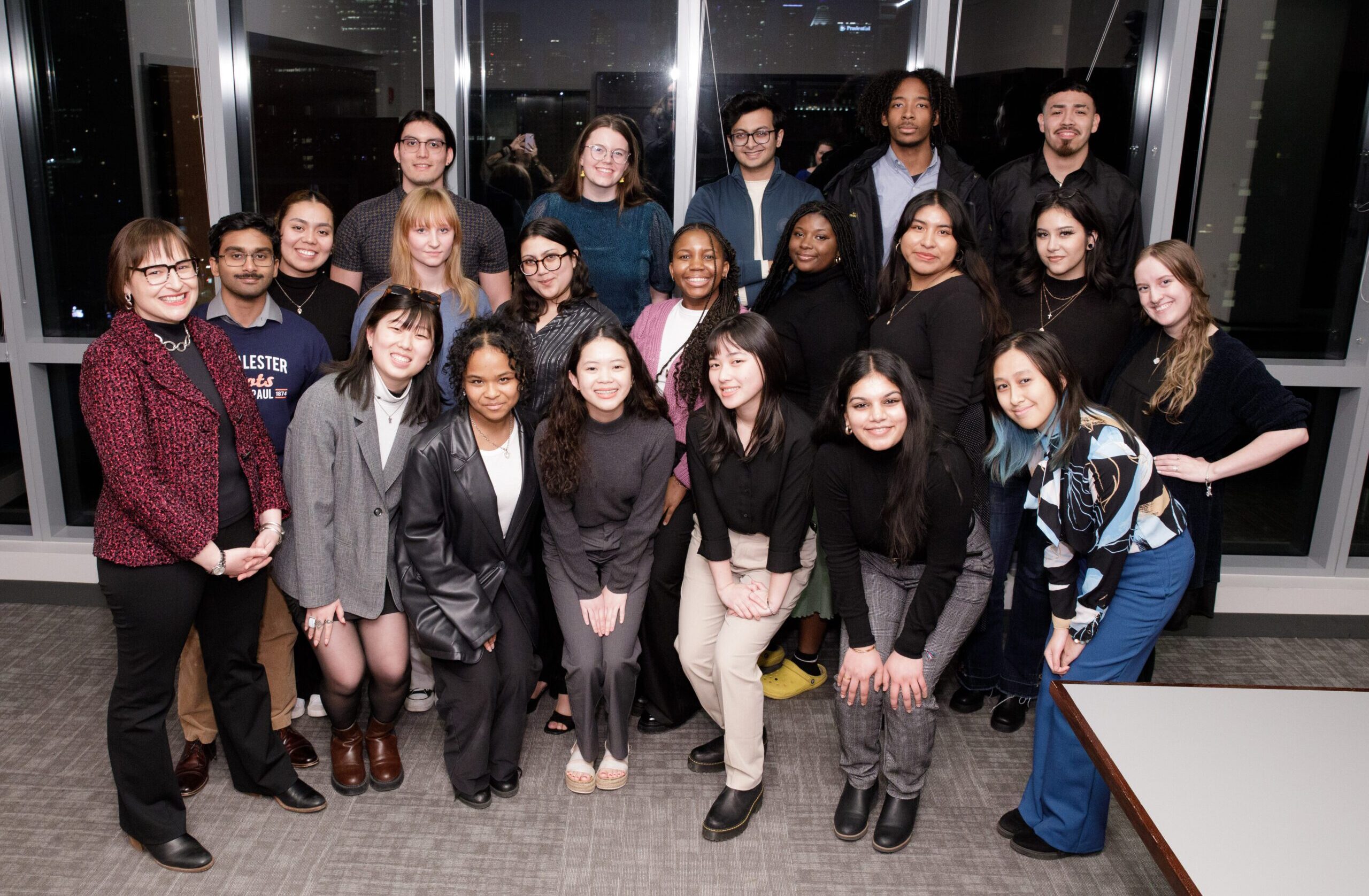They go out in search of dinner and return with lots of food for thought
 In line for Italian ice and a dollop of neighborhood history.
In line for Italian ice and a dollop of neighborhood history.
“This used to be Little Italy. Now it’s Microscopic Italy.”
With that turn of a phrase, the woman serving up Italian ice on Chicago’s Near West Side gave a pair of ACM Chicago Programs students – Katie from suburban Detroit and Logan from Portland, Oregon – a glimpse into the dynamics of neighborhood change in a city known for its neighborhoods, activist politics, and pride in its immigrant roots.
A lifelong resident of the neighborhood, the woman had taken a short break from working the steady stream of customers stepping up to the open-air counter – parents with small children, teens in t-shirts emblazoned with the name of a nearby Catholic high school (where her three kids went to school), and the ever-present college students.

Responding to Katie’s and Logan’s questions, she told the story of how a wide swath of the community was leveled in the 1960s to make way for a new campus for the University of Illinois at Chicago. “When the university began to develop, we lost a lot of our Italians,” she said. “They all had to move.” With a shrug, she added, “What the mayor says, it happens. They made it happen.”
Over the years, more and more students have moved into the area, and more of the oldtimers have drifted away, she said. The younger students are noisy and party a lot – “It’s their first time away from home, they’re not in their own community, so they go hog wild.” They settle down a bit as they get older, she noted.
Whatever time may have brought, though, she said, “It’s a wonderful neighborhood.”
A hunt for sandwiches and a statue (not cup) of Joe
It was the first day of the fall semester as 36 students on the ACM Chicago Programs ventured forth onto the sunny streets to get a taste – figuratively and literally – of the city they’ll call home for the next 15 weeks.
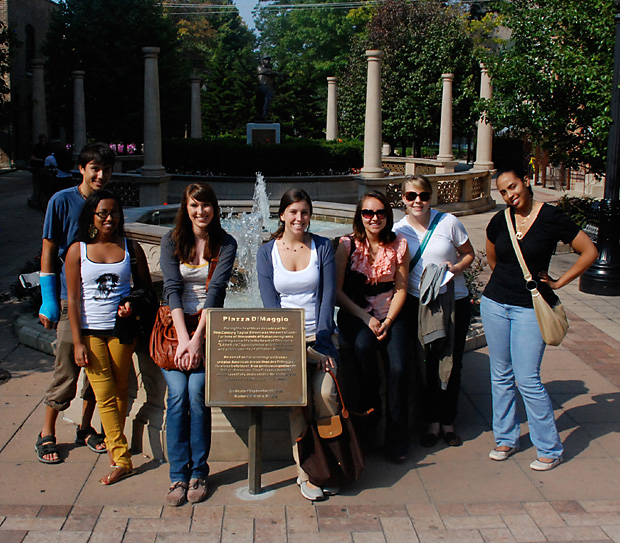 Posing in front of the statue of Joe DiMaggio.
Posing in front of the statue of Joe DiMaggio.
Splitting up into six groups, they embarked on a “scavenger hunt.” The assignment: figure out how to take the bus to their designated neighborhood, see some sites, chat with residents to find out what they think about their neighborhoods, and bring back food to share for a potluck dinner.
So it was that Katie, Logan, and five of their classmates caught the #20 Madison bus west, transferred at Ashland to the #9, and stepped off the bus at Polk Street to get their bearings. Soon they were strolling down leafy residential streets, past the sidewalk cafes lining Little Italy’s Taylor Street, and pausing for a photo in front of the statue of baseball great Joe DiMaggio.
Along the way, one member of the group took a moment to talk with a college student, asking about her impressions of the neighborhood. The report came back that she enjoyed the student-oriented flavor of the neighborhood and felt safer as more students had moved into the area.
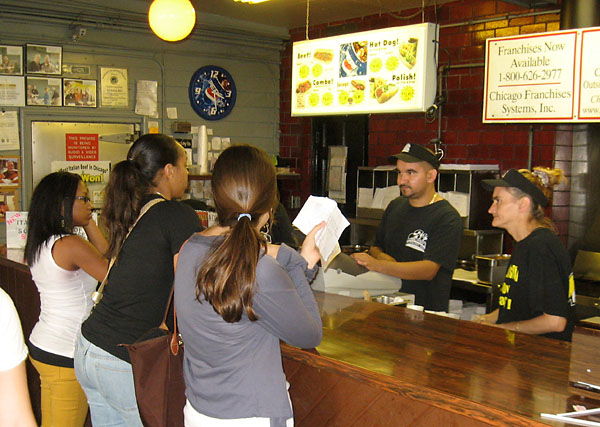 Putting in the order at Al’s #1 Italian Beef.
Putting in the order at Al’s #1 Italian Beef.
A few more blocks and it was time to pick up the food to take back to the program office. The first stop was Al’s #1 Italian Beef, a Little Italy mainstay that got its start in 1938. Patrons lounged at the outdoor tables as the group went inside to place their order. Dozens of signed photos of celebrities adorned the walls opposite the serving counter. Emerging with a bag of Al’s famous beef sandwiches, the group headed across the street to Mario’s Italian Lemonade stand to pick up dessert – three tubs of Italian ice. And that’s where, at the wooden stand on the sidewalk, the history of Little Italy was passed along to the students.
The group took turns carrying the cardboard box in which the tubs were nestled in a bed of melting ice cubes. As they hiked to the train station to head back downtown, Katie and Logan recounted what they were told at Mario’s. Talk turned to the differing views of the neighborhood residents they had spoken to – the older woman who remembered, and missed, the Little Italy of the past and the younger woman attracted to the Little Italy of the present.
The tip of the iceberg
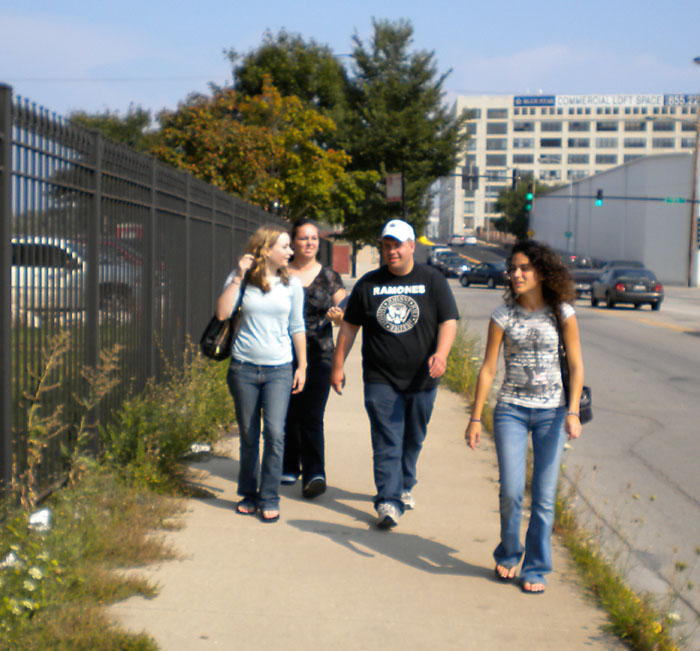 A long walk on the way to Pilsen, courtesy of a relocated bus stop.
A long walk on the way to Pilsen, courtesy of a relocated bus stop.
Back at the Chicago Programs office, the groups of students trickled in from the scavenger hunt, adding their bounty to the buffet table and sharing tales of the day … The long (and we mean really long), slow bus ride up Clark Street to Andersonville, balanced out by the treasure trove of sweets at the Swedish Bakery … Hearing little but Chinese spoken in the stores of Chinatown … The incredible, colorful murals in Pilsen … The mingling of all ages and ethnic groups in triangular Wicker Park, at the heart of the neighborhood of the same name … A chat with an officer from the security detail surrounding President Obama’s home in Kenwood/Hyde Park.
Following dinner, the groups reported on their excursions, their impressions of the neighborhoods, and the people they talked to. Photos they had taken flashed on a screen, illustrating their trips.
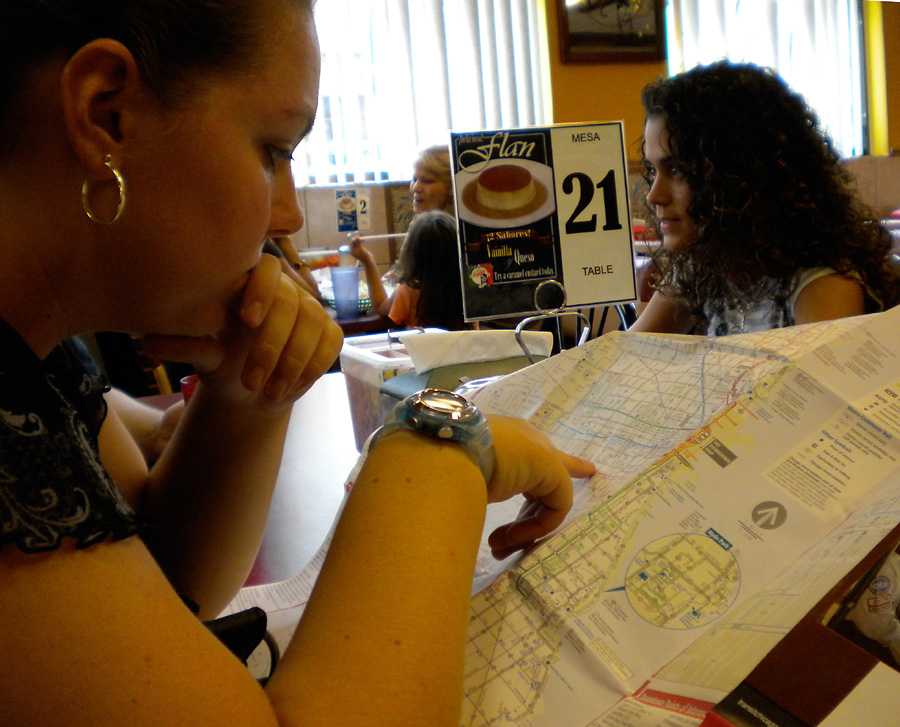 Checking the route back downtown from Pilsen.
Checking the route back downtown from Pilsen.
Themes and questions began to emerge – How and why do neighborhoods change? What are the ways different ethnic and racial groups perceive each other and interact? What gives a neighborhood its character?
Wrapping up the session, Director of Chicago Arts Dave Amrein said, “You’ve hit the tip of the iceberg in nearly everything we’re going to be doing in Core Course,” referring to the Chicago Programs’ interdisciplinary exploration of the city and what makes it tick.
In just an afternoon, the students’ experiences in neighborhoods scattered across the city had begun to reveal some outlines of what the semester in Chicago has in store.
Trying on a new pair of glasses …
The next morning, the students gathered again to continue filling in and analyzing those first impressions gleaned during the scavenger hunt. As with Core Course, the day’s session was for students from all three of the Chicago Programs: Business, Entrepreneurship, & Society, Chicago Arts, and Urban Studies.
Experts from throughout the city are frequently tapped as resources for the students. The guest speaker that day, John Kretzmann, began by asking the students about what they saw and heard the day before, and was told some of the stories from Chinatown, Little Italy, and Wicker Park.
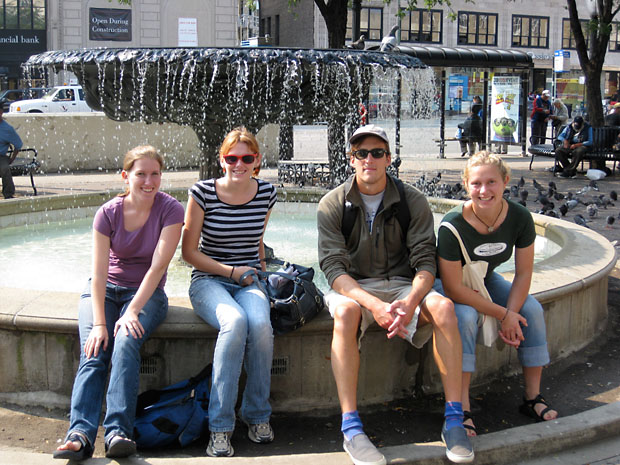 In Wicker Park.
In Wicker Park.
“It sounds like you had your eyes wide open,” Kretzmann said. “I’m going to talk about the kinds of glasses that you might want to wear when you visit neighborhoods, because the expectations that you bring are critically important.”
A founding faculty member of the ACM Urban Studies program in 1969, Kretzmann has spent his career studying cities and working in community organizing and development. As a founder and Co-Director of the Asset-Based Community Development Institute at Northwestern University, he has been at the forefront of a movement to re-focus community development efforts in the U.S. and internationally.
“In a sense there are two pairs of glasses that people use to look at struggling neighborhoods,” said Kretzmann. He described how cities, and especially lower-income communities within cities, are typically viewed as a set of problems – such as poverty, crime, unemployment, and welfare dependency – and populated by needy and problematic people. Solutions, in this view, must come from outside the community.
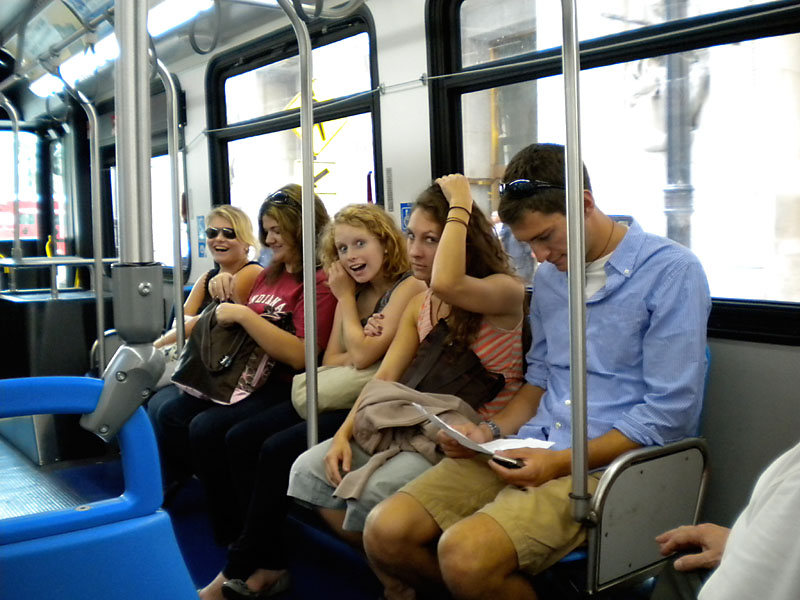 Riding the bus to Chinatown.
Riding the bus to Chinatown.
Yes, the problems and challenges in these communities are very real, said Kretzmann, but this “needs-based” pair of glasses only looks at one side of the equation. The other side of the equation may not be so obvious, he said, and requires us to use an “asset-based” pair of glasses that focuses attention on a community’s strengths.
… and shifting to a new paradigm
Kretzmann told the students about his experiences as a young man during the civil rights era and as a community organizer, and what he learned from the people he met. “In the decades following, I’ve tried to take every possible chance to get into neighborhoods and to do what you did yesterday – talk to people, listen to people,” he said. “These are people who are not in the spotlight, not in the headlines of the Tribune or connected to City Hall, but who are at the grassroots level, at the block level, who have core beliefs and values and who really believe that they can do something to make a difference in their community to make it better.”
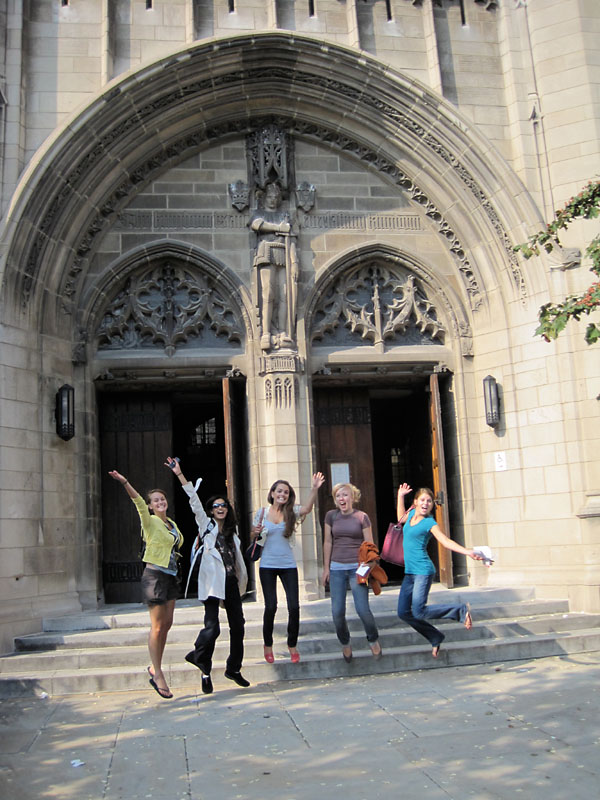 At Rockefeller Chapel in Hyde Park.
At Rockefeller Chapel in Hyde Park.
Sustainable community development is a three-step process, Kretzmann explained. First, find the assets that a neighborhood brings to the table – the capacities, skills, and potential of the people and organizations in the community. Second, connect the neighborhood’s resources with each other. And third – and this is a process happening all over Chicago – whenever possible, harness all of these assets and resources to a widely-held community vision of the future.”
“Chicago is unique in that we think, we dream, and we eat and sleep community and neighborhood,” added Mary Scott-Boria, Director of Urban Studies. “Everybody talks this language and everybody uses this asset-based model as a way to shift the paradigm in community development. Think of this (Kretzmann’s talk) as foundational for all that you will be learning, certainly for Core Course and for other aspects of the program.”
“I envy you your next few months here,” Kretzmann concluded. “This will be one of those semesters where you will get out of it what you put into it. It’s an incredible city and it has just endless amounts to teach you.”
Read more about the ACM Chicago Programs:
Also, check out Chicago Programs student Elle Villalva’s blog (especially the post for Sept. 10!).
Photos by Chicago Programs students and staff.






